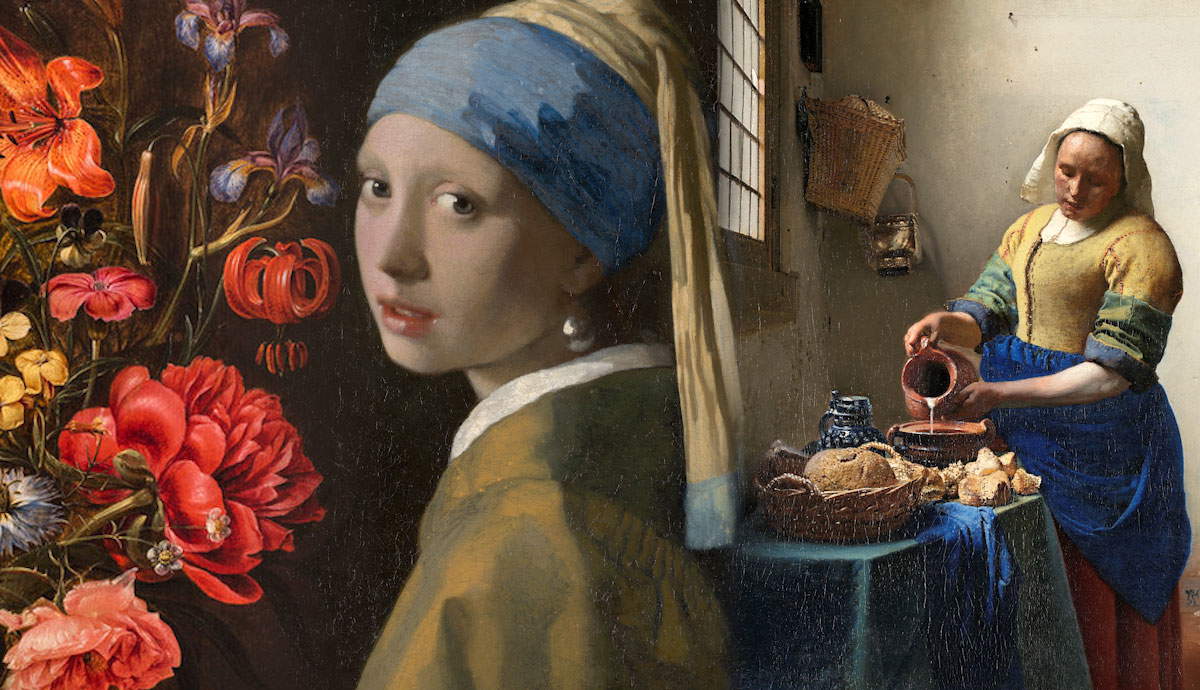
An exhibition in Vienna is shedding new light on an old favorite. Rembrandt – Hoogstraten: Color and Illusion creates a fascinating conversation between the famed Dutch Golden Age master and one of his most successful and innovative students, the painter and art theorist Samuel van Hoogstraten.
Austria’s Largest Rembrandt Show

Rembrandt van Rijn was one of the most influential and important painters in 17th-century Amsterdam. In addition to taking on prestigious portrait commissions that revolutionized the genre, Rembrandt ran a successful workshop in the city. He trained aspiring Dutch artists and oversaw the production of works that continued his distinctive creative legacy. Now, centuries later, a new exhibition offers the unique chance to explore the relationship between Rembrandt and one of his lesser-known but most promising pupils, Samuel van Hoogstraten. Rembrandt – Hoogstraten: Color and Illusion opened to the public last week at the Kunsthistorisches Museum in Vienna and runs through January 12, 2025. It is being billed as Austria’s largest showing of major Rembrandt works.
Rembrandt – Hoogstraten: Color and Illusion was made possible by loans from major museums worldwide, including London’s National Gallery of Art, Amsterdam’s Rijksmuseum, and New York City’s Metropolitan Museum of Art. Many of the borrowed works are shown together for the first time at the Vienna exhibition. Additionally, the Kunsthistorisches Museum presents its own collection of Rembrandt and Hoogstraten works, now side-by-side. In total, the exhibition features approximately fifty paintings and drawings from the Dutch Golden Age, each of which helps paint a fascinating picture of the creative dialogue between teacher and pupil.
Rembrandt – Hoogstraten: Color and Illusion

The Vienna exhibition focuses on two of the most important themes in the work of Rembrandt and Hoogstraten: color and illusion. Both during and long after his lifetime, Rembrandt was famous for his technical innovations, particularly his use of chiaroscuro to achieve evocative lighting effects and rich tonal contrasts. Students in his workshop likewise mastered the distinctive coloration and painterly effect of Rembrandt’s paintings. Additionally, like most 17th-century Dutch masters, Rembrandt taught his pupils how to render subjects with convincingly realistic perspective and detail.
As a student of Rembrandt, Samuel van Hoogstraten became particularly fascinated by—and unusually adept at—the art of illusionistic deception. Such artworks typically attempt to fool the viewer by blurring the boundary between real and painted space, like in a trompe-l’oeil image. Hoogstraten took Rembrandt’s interest in illusion a few steps further, experimenting with perspective and making a name for himself as a painter of architecture. To illustrate the theme of illusion, the Vienna exhibition features new interactive spaces and projections designed to accompany the artists’ 17th-century conceptions of virtual reality.
Who Was Samuel van Hoogstraten?

After distinguishing himself as a follower of Rembrandt, Samuel van Hoogstraten (1627-1678) struck out on his own, painting portraits and mentoring his own students. He eventually left Amsterdam for Vienna, where he gained the prestigious patronage of members of the Habsburg court. Hoogstraten further differentiated himself from his master by creating perspective boxes, or “peepshows,” which used light, architectural elements, and the camera obscure to create an illusory three-dimensional view of an interior space, such as a typical Dutch home. For Rembrandt – Hoogstraten: Color and Illusion, the Kunsthistorisches Museum constructed a replica of a surviving perspective box that was actually constructed and used by Hoogstraten.







